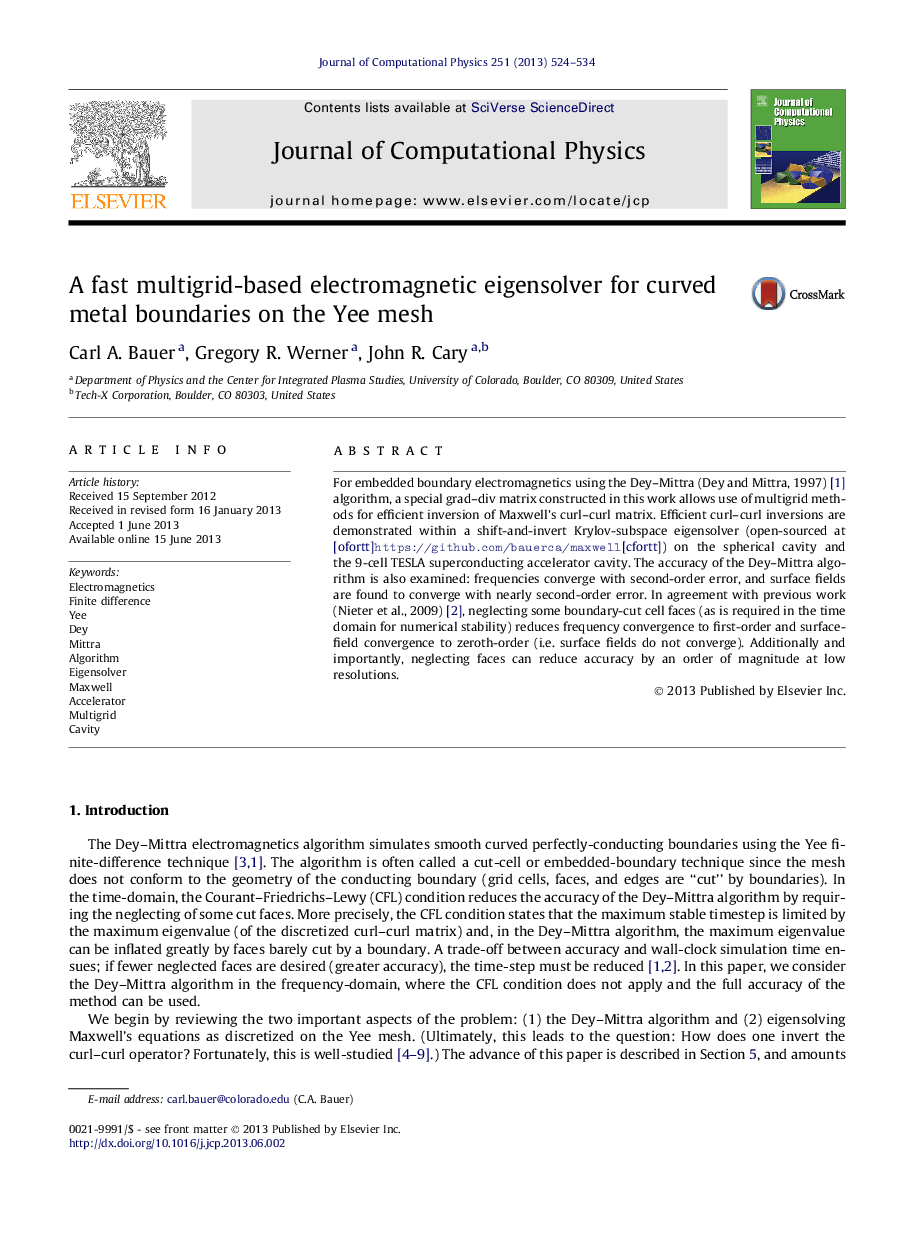| Article ID | Journal | Published Year | Pages | File Type |
|---|---|---|---|---|
| 518718 | Journal of Computational Physics | 2013 | 11 Pages |
For embedded boundary electromagnetics using the Dey–Mittra (Dey and Mittra, 1997) [1] algorithm, a special grad–div matrix constructed in this work allows use of multigrid methods for efficient inversion of Maxwell’s curl–curl matrix. Efficient curl–curl inversions are demonstrated within a shift-and-invert Krylov-subspace eigensolver (open-sourced at [ofortt]https://github.com/bauerca/maxwell[cfortt]) on the spherical cavity and the 9-cell TESLA superconducting accelerator cavity. The accuracy of the Dey–Mittra algorithm is also examined: frequencies converge with second-order error, and surface fields are found to converge with nearly second-order error. In agreement with previous work (Nieter et al., 2009) [2], neglecting some boundary-cut cell faces (as is required in the time domain for numerical stability) reduces frequency convergence to first-order and surface-field convergence to zeroth-order (i.e. surface fields do not converge). Additionally and importantly, neglecting faces can reduce accuracy by an order of magnitude at low resolutions.
